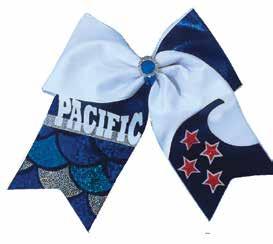
4 minute read
Specialist Advice from Simpson Western
theMillwatermag
Buying a Property and the risks of ‘P’ contamination
Advertisement
The subject of risks, dangers and potential financial costs of possible methamphetamine (“P”) contamination in properties has received significant exposure in the media in the past few months.
We advise our clients to be cautious when buying any property, and making investigations in respect of meth contamination should be part of any purchaser’s due diligence enquires. There are three basic enquiries that can be made:
1. The Vendor and/or Agent should be asked specifically about meth; in particular whether the property has been tested or monitored. The standard agreement used in the sale and purchase of properties can be amended to provide a warranty from the vendor that the property has not been used for meth manufacture.
2. As part of your general due diligence, you should be obtaining a copy of the Land Information Memorandum (LIM) report from Council. If Police are aware of a property being used as a Lab, the council may be informed. The Council may note the risk of contamination on a property’s LIM. Some Councils may add the notification permanently while others remove it once the property has been decontaminated.
3. Have the property tested for meth contamination. There are indicative tests that provide a yes/no answer as to whether meth residue is present on the property. Samples are collected and sent to a laboratory for testing. The actual level is not ascertained; only more detailed laboratory testing would determine the level. There are different qualities of meth testing available, so it pays to check that you are engaging somebody who knows what they are doing.
At the moment, there are no standardised procedures or regulations in respect of meth contamination testing. This is currently being worked on, with further information expected later on in the year. In the meantime, it is best to exercise caution and complete full due diligence enquiries when purchasing a property.
KATRINA SIMPSON Solicitor SIMPSON WESTERN
CNR MILLWATER PARKWAY & POLARITY RISE, SILVERDALE DDI: 09 489 0756 P: 09 486 3058 F: 09 486 2235 www.simpsonwestern.co.nz
FOR SPECIALIST HELP FROM OUR FRIENDLY TEAM
SMARTER SOLUTIONS FROM SPECIALISTS
Phone 09 421 0559 Email enquiries@simpsonwestern.co.nz
WWW.SIMPSONWESTERN.CO.NZ
Business Services Asset Planning, Trusts, Wills & Estates Property Litigation & Dispute Resolution Employment Law Relationship Property Lifestyle Planning Immigration Law
42 millwaterasiancorner
Fish Part 2

Last month, I talked about how most Chinese consider fish to be fresh only if it is alive right before it is cooked. Now let’s have a look at how the Japanese take a totally different approach to maintain the freshness of the fish.
When fish is eaten raw, freshness is no doubt very important, but the condition of the flesh could also affect the tasting experience. Fish that are trapped in a tank could become very stressed and, as a result, damage the texture of the flesh. The logistics of transporting the fish alive could also cause bruising and loss of fat, which is also not ideal for sashimi. Therefore, the Japanese have originated a technique to paralyse the fish, to maintain the quality of its meat – this is called Ike Jime. When the fish is caught, a needle is inserted into its hindbrain, causing the fish immediate brain death. This is a very common method to cease all motion of the fish, as well as retain the freshness of the meat.
Just like beef, sometimes fish are aged before serving as sashimi/sushi in Japan. Common ones are tuna and snapper. When the fish is properly aged, protein will be converted into amino acid, which enhance the flavour of the meat; the fish fillets inside the glass box of the sushi bar have certainly included many precise procedures and considerations of the chef.
In New Zealand and most other countries around the world, salmon is the most common fish for sushi and sashimi. Ironically, in Japan traditionally people do not eat raw salmon – this is because wild salmon contains parasites that are, of course, a big risk to our health. Although nowadays most of the salmon consumed is farmed and has relatively low risk of containing parasites, it is still rare to see salmon in the traditional sushi bar. A sushi master may punch you in the face if you ask for a salmon sushi!
Some fish that are commonly use as live bait here in New Zealand are actually very popular sashimi ingredients in Japan: piper (Sayori) and yellowtail (Aji) are a few to name, which are also our family favourites. Since Japanese restaurants here do not serve these fish, the only way we can eat them is to fish for them ourselves. Next time, if you see someone jumping up and down, screaming excitingly on a wharf just because a piper is caught, don’t laugh; it could be us hoping to have a decent sashimi plate for dinner!
Nita Wong Originally from Hong Kong, 20+ years ago Millwater resident

AND Open Saturday morning Orewa Medical Plaza, 8D Tamariki Ave, Orewa Phone: (09) 426 5437 www.orewamedicalcentre.co.nz











